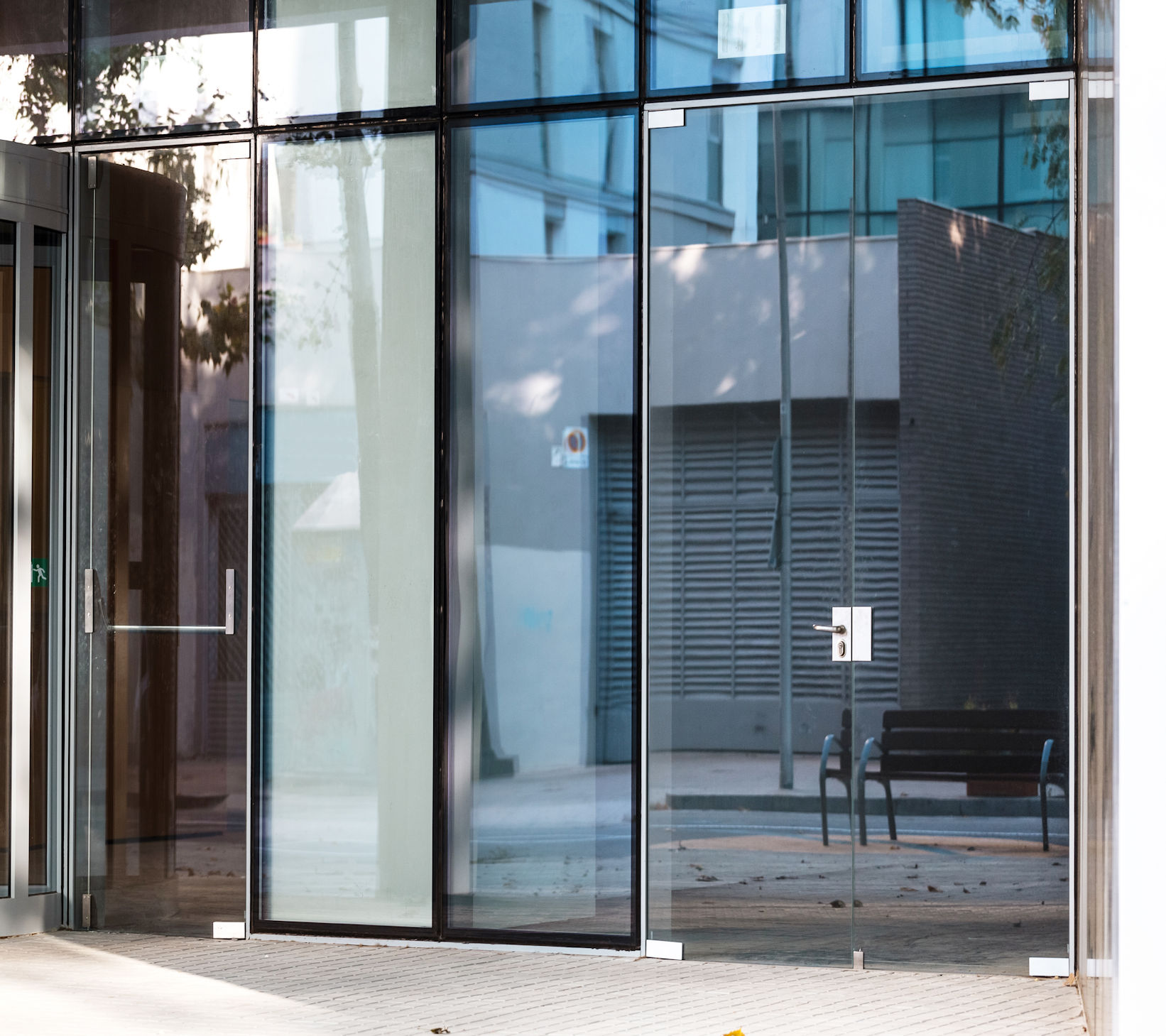 Yesterday’s post about bottom rails on all-glass doors raised a Quick Question:
Yesterday’s post about bottom rails on all-glass doors raised a Quick Question:
Do glass doors with patch fittings meet the requirements for a flush bottom rail?
It looks I answered this question back in 2012, but some of you were probably still in high school back then. 😀
Patch fittings are sometimes used on glass doors, to accommodate the hardware – pivots, locks, closers, etc. When they are used at the bottom of the door, they likely create a conflict with the requirement for a flush smooth surface in the area on the push side of the door, measured 10 inches up from the floor.
 The accessibility standards require this flush, smooth surface across the bottom of the door to prevent projections from catching a crutch, cane, or wheelchair footpad as a building occupant moves through the doorway. The standards require parts creating horizontal or vertical joints to be within 1/16-inch of the same plane. Because the difference between the plane of the glass and the face of the patch fitting would likely be more than 1/16-inch, I think most AHJs would find patch fittings non-compliant at the bottom of the door. I would recommend at least discussing this application with the AHJ, or using a continuous bottom rail if possible.
The accessibility standards require this flush, smooth surface across the bottom of the door to prevent projections from catching a crutch, cane, or wheelchair footpad as a building occupant moves through the doorway. The standards require parts creating horizontal or vertical joints to be within 1/16-inch of the same plane. Because the difference between the plane of the glass and the face of the patch fitting would likely be more than 1/16-inch, I think most AHJs would find patch fittings non-compliant at the bottom of the door. I would recommend at least discussing this application with the AHJ, or using a continuous bottom rail if possible.
Note that this requirement applies to the push side of manually-operated swinging doors, and does not apply to automatic doors. Patch fittings that are not located at the bottom of the door are not subject to these limitations.
You need to login or register to bookmark/favorite this content.





I hate making even more codes, but this one needs to go. A little common sense says that it is not a problem that close to the hginge side of the door. My wife uses a wheelchair and she never comes near the hinge side, you would purposfuly have to try to hit it. Who could change the wording so that it is doable.
Hi Tim –
Thanks for sharing your insight. I was thinking about that when I wrote the post…there are sometimes patch fittings for locks at the lock edge of the door, and it seems like the patch fitting for the pivot could be an issue for someone entering (not so much for someone exiting). As far as who can change the wording, I could propose a change to ICC A117.1 for the next edition, but I don’t know when the ADA standards will be updated. It has been 10 years since the last update.
– Lori
Lori, I think the use of the word “patch” is misleading in regards to this situation. The door requires the specialized mounting bracket to accommodate the bottom pivot, otherwise, how the heck do you mount a pivot to a piece of ½” thick tempered glass? Perhaps a glass door manufacturer can jump in and use more accurate terms and information to address this application.
Hi Jerry –
I have only heard them called patch fittings, but if there is another term, let me know and I will edit the post.
http://crlaurence.com/crlapps/showline/default.aspx?GroupID=60979
https://www.enox.in/en/products/glass-architectural-hardware/patch-fittings/glass-patch-fittings/
https://www.glassparts.ie/glass-door-systems/swing-glass-door-systems/patch-fittings-and-accessories
– Lori
If that is the case then these so called foot pulls being introduced to assist in hands free (covid) operation of a door even though on the pull side are an obstruction?
Hi David –
The requirement for the flush smooth surface is on the push side of the door, not the pull side. This is referenced a couple of times in the post but let me know if you think it’s still unclear and I will edit it.
– Lori